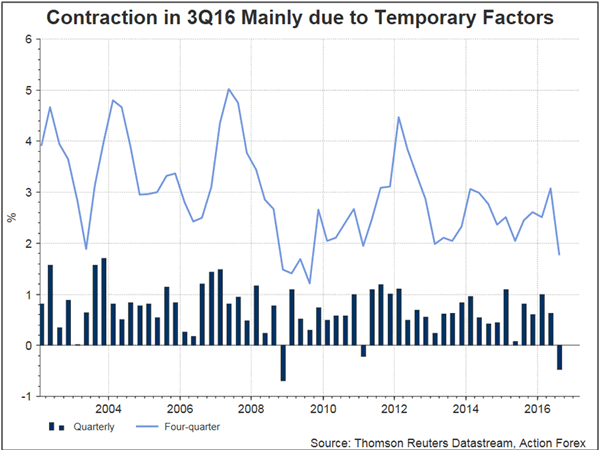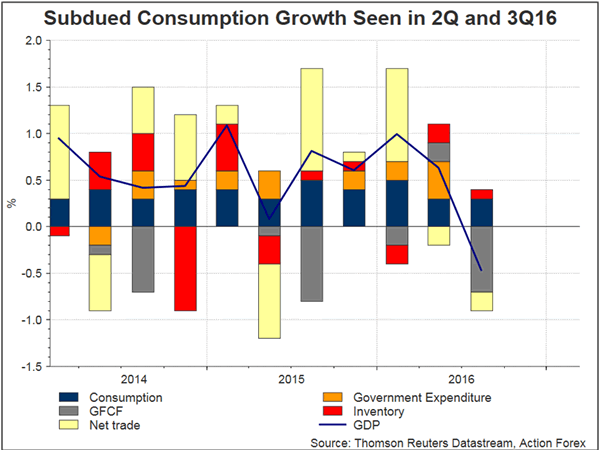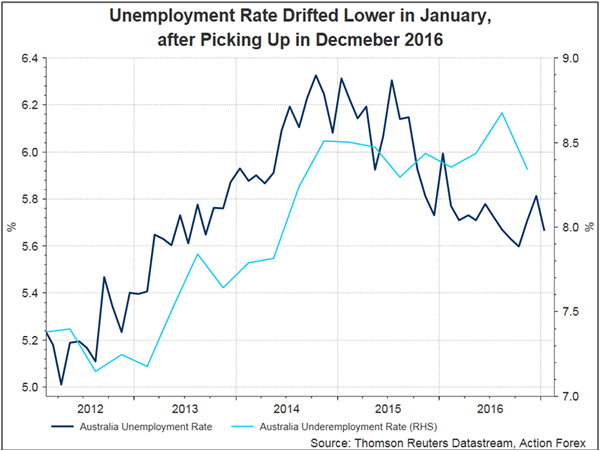RBA minutes for the February meeting contained little news. Indeed, it reinforced our view that the central bank would leave the monetary policy unchanged for the rest of the year. The market currently prices in further rate cut this year, followed by rate hike in 2018. The central bank acknowledged the -0.5% GDP contraction in 3Q16. While attributing most of the weakness to temporary factors including ‘disruptions to coal supply and bad weather’, policymakers also warned that ‘slower growth in consumption had also been a factor’. However, they assured that such weakness should not have continued into 4Q16. On the growth outlook, the central bank suggested that ‘GDP growth was expected to pick up to around +3% in year-ended terms later in 2017, and to remain above estimates of potential growth over the rest of the forecast period’

On household consumption, RBA indicated that the subdued growth in the second and third quarters was ‘consistent with subdued growth in household income’ and this would continue to ‘constrain consumption growth over the forecast period’. The minutes, however, suggested that growth in retail sales volumes for 4Q16 had increased, as ‘households’ perceptions of their personal finances had remained around average and expectations of unemployment had been low relative to recent years’. As elaborated in the minutes, the forecasts for consumption growth were closely related to labour market developments and households’ expectations about their income growth. Employment had risen modestly in 4Q16 and ‘all of the increase had been in the full-time component, reversing the pattern of the previous few quarters’. Moreover, ‘forward-looking indicators had been consistent with some pick-up in employment growth over the period ahead’.

Policymakers remained cautiously optimistic over non-mining business investment. They noted that strongest growth in the aspect was seen in New South Wales and Victoria over recent years. They added that ‘while non-residential building construction was likely to remain subdued in coming quarters, the increase in approvals over the past year across a range of sectors suggested that non-residential building construction would contribute to GDP growth towards the latter part of the forecast period’.
The unemployment rate drifted lower to 5.7% in January, after soaring to 11-month of 5.8% in December. RBA described the job market as ‘mixed’ and cautioned over the ‘uncertainty about the momentum in the labour market’. However, it also acknowledged the increase in full-time employment growth over the past year and forecast that the unemployment rate would ‘edge lower’ in coming months.















